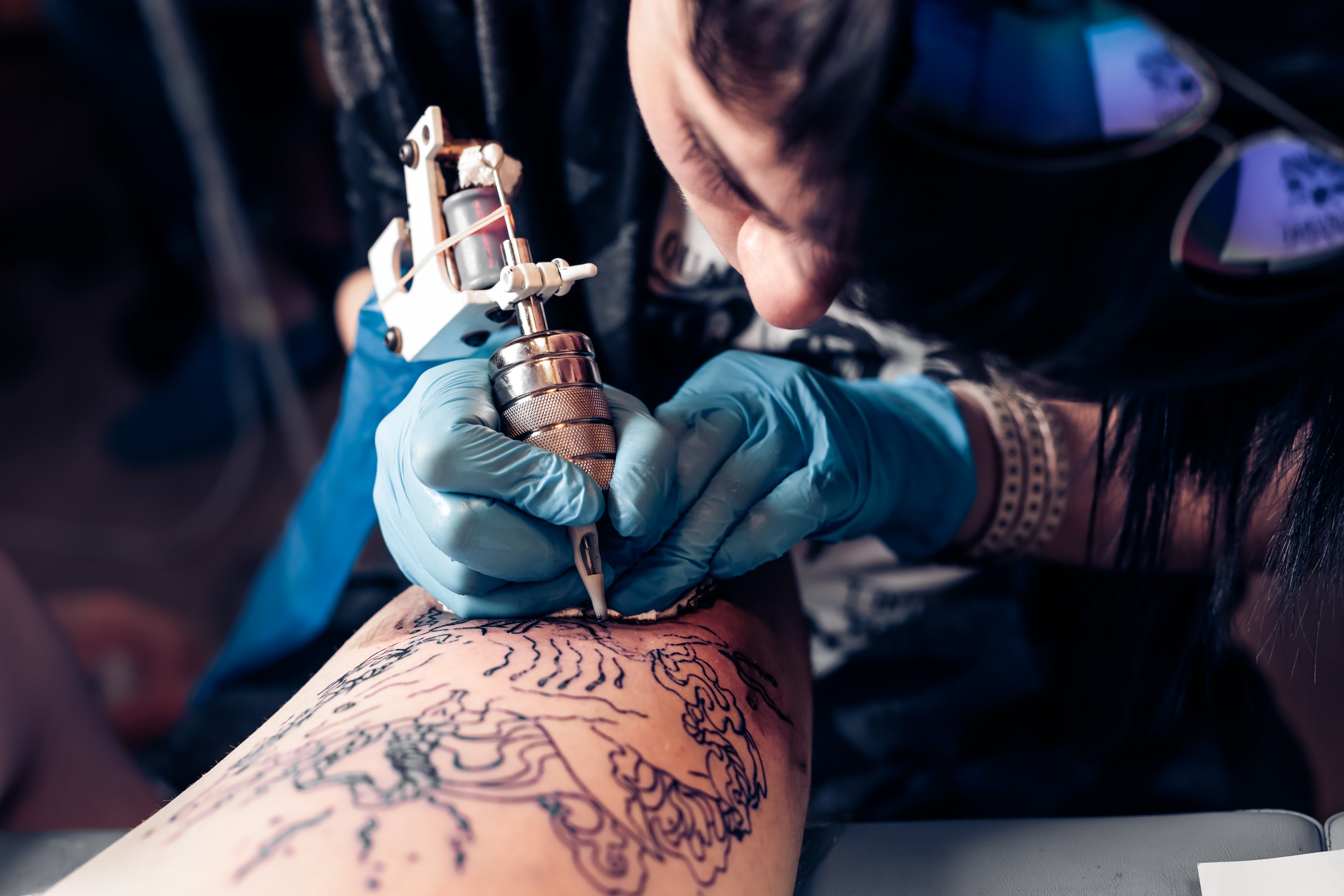Forget lazy cliches about ‘criminals and sailors’ – western tattooing has a rich history
Self-proclaimed moral guardians have been decrying body modification and beautification for centuries


Earlier this month, The Times columnist Melanie Phillips wrote that tattoos made her “feel physically sick”. Her argument was that tattooing had long been taboo – “once confined to rough sorts such as navvies, convicts or soldiers” – but was now hyper-fashionable, a sign of moral degradation and a collapse of the proper order of things.
It’s a theme she’s explored before. In 2016, she opined that an increase in the cultural acceptance of tattooing showed that Britain was “turning pagan”. Like a reliably broken record, she wrote: “Once the preserve of sailors, navvies and criminals, tattoos now widely advertise the hipness of celebrities and the middle classes.”
Tattooing in the 21st century, by Phillips’s account, is newly fashionable, as compared to some moment in the past when only rotters and wrong ’uns would ever think of doing it. It’s also indicative of some deep rejection of “western values”, so entirely hostile to Christian thought that the very presence of tattooing is emblematic of a cultural embrace of “paganism”.
Let’s deal with the latter charge first, that of tattooing being antithetical to Christian history. If Phillips is right, how can we make sense of an article published in Good Words magazine in 1905? The magazine, an Edwardian Christian news sheet, reported excitedly more than a century ago on the increasing number of tattooed clergy, including a Jesuit priest who had his chest covered with an image of the crucifixion, an order of monks with a communal tattoo of their fraternal badge, and a “well-known Bishop” with a serpent and cross on his arm.
The truth is, Christian designs have been a hugely important pillar of western tattooing since the 17th century. Even amongst those sailors and criminals Phillips so reviles, a substantial portion of the iconography recorded is Christian in nature. Indeed, most of the European tattooing for which we have evidence prior to the Pacific encounters of the late 18th century is explicitly Christian. In 1739, an English indentured servant in the Virginia Colonies, for example, was marked on one arm with “our Saviour upon the Cross between two Thieves; and on the other, the Image of Adam and Eve”.
And it wasn’t just the British. In Spain in 1743, the Inquisition recorded that a rose and lemon seller named Lorenzo had added a blasphemous anatomical profanity underneath his tattoo of Christ on the cross. Perhaps that’s the kind of thing Phillips had in mind?
Further back into history, we can even thank Christian pilgrims to the Holy Lands for giving us some of the most concrete evidence of tattooing on Europeans in the early modern period. From the late 16th century onwards, visitors to Jerusalem were able to acquire souvenir tattoos from Christian artists there. The designs included images of saints, of the Holy Sepulchre, of Jesus’s birth, death and ascension, and, commonly, the Jerusalem Cross, the five-cross icon of proselytisation of the Christian faith around the world.
Pilgrims to Jerusalem can still be tattooed in the Old City today, and back in 1862, even the future King Edward VII acquired his own Jerusalem Cross tattoo there. His son, the future King George V, also got his own pilgrimage tattoo two decades later.
So much too, then, for sailors and criminals. In fact, whilst there have of course been huge numbers of tattooed rogues and ruffians in western tattoo history, the truth has always been more complicated and the population of tattooed people more diverse than the popular perception imagines. One of the causes for the persistent cliche is simply that tattoos on sailors and criminals are easier to find records of in the archives, but if we want to prove Phillips wrong, we really only need to look at the work of people of her own profession.
As Phillips even wrote herself back in 1991: “Every generation harks back to a mythical golden age of order and stability, and blames current disorders on moral and social degeneracy". As for tattooing, there are examples of British and American journalists writing about the trendy present of tattooing as compared to its uniquely maritime past in every decade, going back to the 1870s.
In 1984, City Limits magazine in London wrote about tattooed university lecturers, saying that “if the word ‘tattoo’ makes you think of servicemen, you’re out of date”. The Daily Mail reported in 1930 that tattooing was now “a la mode”, with sailors no longer the chief patrons. The New York Times wrote in 1908 that the habit was “not confined to seamen only”, and in 1882 that tattooing was a “short-lived hobby” for “fashionable folks”. Tattooing’s chic present and its taboo past cannot be so easily divided.
I have, I admit, been slightly hypocritical in accusing Phillips of being a broken record. I first interviewed with the BBC about the cliche that tattoos were “not just for sailors” back in 2014, dredging up a deep well of newspaper articles, academic research and interviews with tattoo artists to show just how enduring the idea of some mythical, unitary past of tattooing, entirely separated from the present, really is. But if journalists (and even other academics) insist on repeating this tired oversimplification, I suppose I will have to insist on repeating my corrections.
To keep up to speed with all the latest opinions and comment, sign up to our free weekly Voices Dispatches newsletter by clicking here
Being scrupulously fair to Phillips, we might perhaps mark the “before” she is worried about as 1860s, the first decade for which I have not (as yet) located this journalistic cliche. In 1866, the moral panic about barbaric customs threatening the sanctity of the human body through the importation of darkly pagan ritual was not about tattooing, however, but about something else entirely.
That year, the illustrated magazine London Society reported on one Mr Baker’s travels in Africa. There, they reported: “He met some savages who disfigured their hair by disfiguring it with ochre, so that it would seem that the fashionable lady of the 19th century is, after all, returning to the barbaric custom of dying the hair. As the wind has set in that direction, who knows but what we might hear of ladies dyeing their teeth or tattooing their faces?”.
Self-proclaimed moral guardians have been decrying body modification and beautification for centuries, often in racialised terms. Very little separates Melanie Phillips’ 21st century response towards to tattooing and Mr Baker’s 19th century one towards dying of the hair.
Perhaps that should be a lesson to anyone who wants to assert that really, this time, right now, the collapse of society’s moral fabric is right around the corner?
Dr Matt Lodder is a senior lecturer in art history and director of interdisciplinary studies at the University of Essex

Join our commenting forum
Join thought-provoking conversations, follow other Independent readers and see their replies